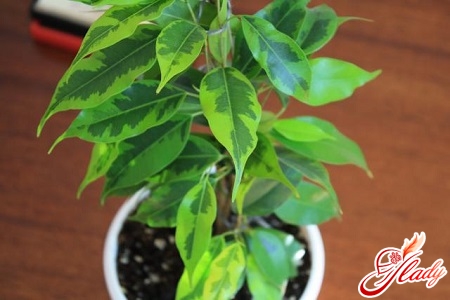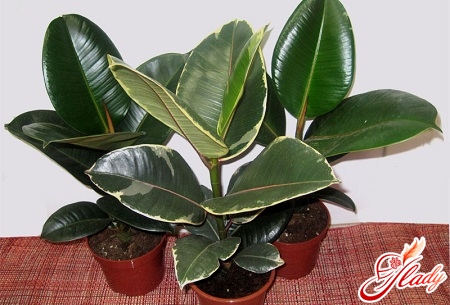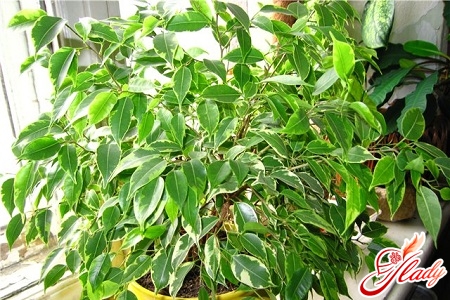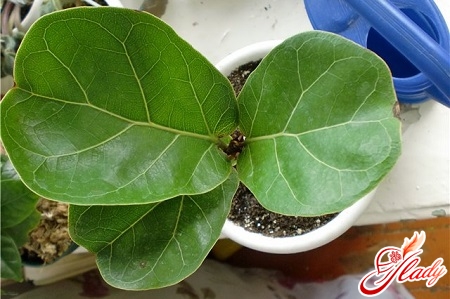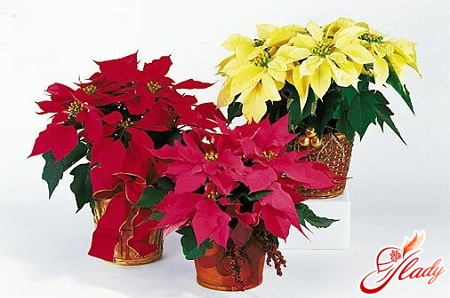 Poinsettia pulcherrima, Poinsettia benthium or Poinsettia benthiumChristmas star – this is the name of this unusual houseplant that blooms on the eve of the main Christian holiday. By the way, what we are used to considering a flower in poinsettia is not one at all. However, this is far from the only feature of such a bright representative of the numerous family of euphorbiaceae. Among domestic lovers of floriculture, poinsettia has become popular quite recently, but in the West it has been known and loved for more than a hundred years. Moreover, the houseplant poinsettia has managed not only to become one of the favorite house flowers, but also to receive the title of a symbol of Christmas. What is this exotic plant? Let's figure it out.
Poinsettia pulcherrima, Poinsettia benthium or Poinsettia benthiumChristmas star – this is the name of this unusual houseplant that blooms on the eve of the main Christian holiday. By the way, what we are used to considering a flower in poinsettia is not one at all. However, this is far from the only feature of such a bright representative of the numerous family of euphorbiaceae. Among domestic lovers of floriculture, poinsettia has become popular quite recently, but in the West it has been known and loved for more than a hundred years. Moreover, the houseplant poinsettia has managed not only to become one of the favorite house flowers, but also to receive the title of a symbol of Christmas. What is this exotic plant? Let's figure it out.
Botanical portrait
The official botanical name of poinsettia isEuphorbia pulcherrima. This is a small tree or shrub about a meter high. However, some varieties of poinsettia grow up to four meters in height. The leaves of the poinsettia are serrated, colored dark green, have a length of seven to sixteen centimeters. What we call a poinsettia flower is actually a bract. These are brightly colored leaves, in the axils of which real flowers develop. The bracts of the poinsettia amaze with the variety of colors. Their color varies from snow-white to bright scarlet and even dark burgundy. The Christmas star can be orange, cream, yellow, and pink. What is noteworthy is that a special regime of day and night alternation is necessary for the coloring of the bracts. With a lack or excess of light, its "flower" will remain green. However, with an equal alternation of dark and light times of the day, the bract acquires the color characteristic of the poinsettia. True poinsettia flowers are inconspicuous, look modest and are not even particularly interesting to pollinating insects. The small yellowish rosettes of real flowers look more like stamens in the center of a bright bract, which we take for the petals of the Christmas star. Poinsettia is native to Mexico, where it currently grows in the wild. The natural habitat of the Christmas star is deciduous tropical forests that stretch along the Pacific coast of Mexico. Poinsettia magnifica also grows in Guatemala, Nicaragua and Costa Rica. But how did it go beyond the boundaries of its natural habitat, spread throughout the world and even get called the Christmas star?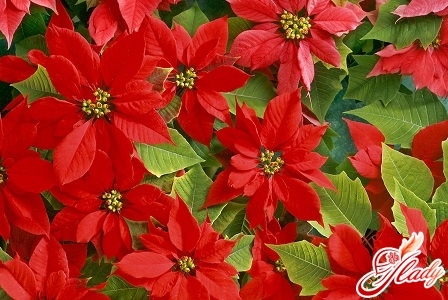
Historical reference
I wonder why it was the poinsettia that becamea symbol of Christmas, although many other indoor plants bloom at the same time. There is an explanation for this, rooted in the history of the ancient Aztec tribes. Long before the poinsettia was elevated to the status of a Christmas flower, it was considered a symbol of purity by the Aztecs. In general, these people were very sensitive to wild poinsettia flowers, and for their own needs, people grew it in their gardens. The Indians used the crimson and blood-red leaves of the poinsettia to make cosmetics and fabrics, and its milky juice was used to treat fever. After the fall of the Aztec Empire, the cultural traditions of this people were forgotten, and the French founded a Christian mission in Mexico. It was here that poinsettia was first used to decorate Christmas processions and services, and soon turned into a symbol of this holiday. And there is another very beautiful legend about the flower of the wonderful night. According to this legend, the poinsettia Christmas Star owes its name to a little girl from a peasant family. According to a new tradition, Mexican peasants brought gifts to little Jesus on Christmas Eve. The poor peasant girl did not have a gift. Then she picked and gave a bouquet of wild flowers, which miraculously turned into beautiful poinsettias. By the way, this flower got its name poinsettia from the American ambassador to Mexico Joel Poinsett. It was he who introduced it to the Old and New Worlds. But poinsettia became a symbol of Christmas and the Star of Bethlehem through the commercial interest of farmer Paul Ecke. Having started growing poinsettias for sale, he achieved its mass popularity. Well, the time of poinsettia flowering, coinciding with the Christmas holidays, made it an attribute of this Christian celebration. The New Year's tradition of decorating the house with these beautiful flowers is taking root in our country. True, we do not yet perceive blooming poinsettias as an attribute of the holiday - for us they are just beautiful houseplants. By the way, poinsettia is of interest not only to amateur flower growers, but also to collectors, because there are enough of its species to assemble a simply gorgeous collection.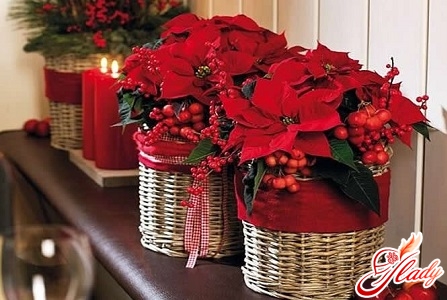
Types of punching
Poinsettia is also notable for itsnumerous varieties. Moreover, varieties differ not only in the color of the bracts, but also in their shape. However, different varieties of poinsettia are classified precisely by the color of their bracts. In the wild, more than a hundred varieties of this beautiful plant are known, on the basis of which a huge number of hybrids were bred (pink, white, yellow, orange poinsettia). Here are just a few of them. Varieties of red poinsettia A classic of the genre is a bright red bract rising above the main dark green leaves. Varieties: Sonora, Premium Red, Olympia, Goldtinger, Galactica, Prestige Maroon. The red bract of the Champion poinsettia is somewhat paler. The Jester Red variety is distinguished by dark veins on a bright red bract, and the red leaves of the Jingle Bells and Sonora White Glitter poinsettia seem to be sprinkled with white paint. The Cortez Fire and Peterstar poinsettia varieties have a fiery red bract close to the classic color, while the Freedom and Red Diamond varieties amaze with a pure scarlet color. Among the red poinsettias, the Carousel Dark Re varieties stand out (it has wavy bracts) and Winter Rose (wrapped bract leaves resembling a rose). Pink poinsettia varieties Pink poinsettia species are also quite common in flower growers' collections and in stores. Their color varies from the delicate milky pink of the Maren and Freedom Pink varieties to the rich salmon Cortez Pink or the bright pink Pink Ell. There are many variegated varieties among pink poinsettias. The pink bract leaves of the Monet Twilight and Da Vinci varieties seem to be sprinkled with white powder. The marble color of the Marblestar, Peterstar Marble and Silverstar Marble varieties is a white border of the leaves, and Jester Pink is a green border. Carousel Pink is a terry pink poinsettia with green veins, and the Strawberry and cream variety has pink-purple leaves that seem to be cut along the edges. White poinsettia varieties White poinsettia is no less beautiful than its bright pink and red rivals. White poinsettia varieties are distinguished by a special charm, restrained sophistication and nobility. Moreover, the white color of the bracts also amazes with a variety of all conceivable and inconceivable shades: from snow-white Whitestar or Silverstar White to the ivory color of the Cortez White and Sonora White varieties. Polar Bear, Infinity White and Freedom White varieties are distinguished by a pure white color, and the Regina variety has clearly visible contrasting green veins on white bracts. And these are far from all the types of poinsettia. Both professionals and amateurs continue selection, obtaining new species, varieties and hybrids of this beautiful plant. The tradition of using poinsettia as a New Year's attribute is also taking root. It is possible that soon this houseplant will become as indispensable a part of the holiday as the New Year tree. In the meantime, poinsettia remains a simply beautiful flower and very suitable for a gift. It is not for nothing that gorgeous multi-colored beauties of poinsettia appear in the windows of flower shops on the eve of the New Year holidays. By the way, having received it as a gift, you can keep the poinsettia as a beautifully flowering houseplant. True, this flower is capricious and requires attention and proper care. But this is a topic for a separate conversation. We advise you to read:





